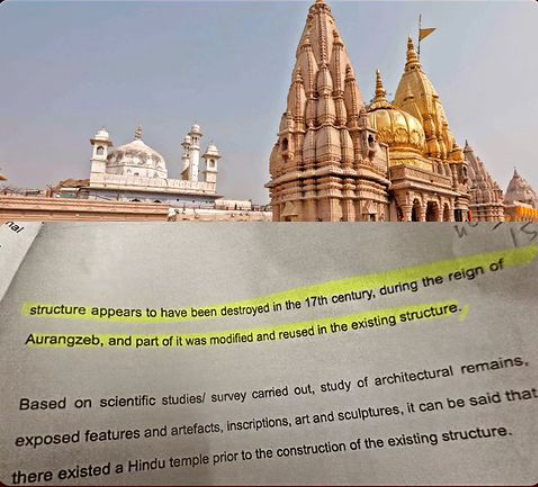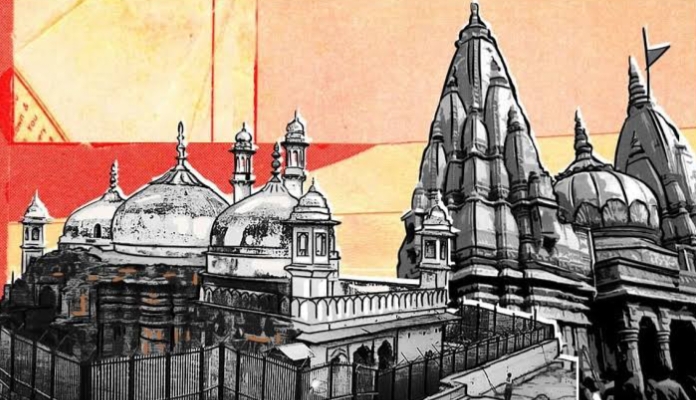UnveilingGyanvapi : Pursuit of Historical Truth
At the core of the Gyanvapi story lies the blending of Hindu and Islamic traditions, a testament to their coexistence within Indian society. However, beneath the outward appearance of harmony, there is a tale of conflicting interpretations, where historical truths intertwine with political motivations, creating a ripple effect through time.
This article dives into Gyanvapi History , Archaeological exploration and legal proceedings. We aim to shed light on its origins, significance and place in India’s diverse Heritage.

Gyanvapi Dispute : A Timeline
12th, 13th Century : Origins of the Gyanvapi Dispute
Varanasi, also known as Kashi, was a prominent center of Hindu spirituality and learning. The famous Kashi Vishwanath temple, built in 1780 by Queen Ahilyabai Holkar of Indore, was at the heart of this ancient city. It is dedicated to the Hindu deity Shiva. Close to the Kashi Vishwanath temple is the Gyanvapi mosque, which is a subject of debate regarding its location in Varanasi’s religious landscape. Some claim that the mosque was built on the remains of the ‘original’ Kashi Vishwanath temple, but the truth of these claims is uncertain. Scholars, however, agree that the mosque does occupy the site of a Vishweshwara temple dedicated to Shiva. The origins of the Vishweshwara temple are ancient, but it was destroyed in the 12th century by Qutub-ud-din Aibak, the General of Ghurid Sultan Mohammad Gauri. Despite attempts to rebuild the temple, Princess Raziyat-ud-din of the Delhi Sultanate ordered the construction of a mosque in the 13th century on its ruins.

1669: Aurangzeb Orders Demolition of Vishweshwara Temple
In 1669, during the reign of the Mughal Emperor Aurangzeb, an important event occurred in Varanasi that had a significant impact on the Gyanvapi mosque’s history. Aurangzeb ordered the destruction of the Vishweshwara Temple, a highly respected Hindu religious site located near the Kashi Vishwanath temple. The Vishweshwara temple had been rebuilt by the priest Narayan Bhatta in the 16th century, under the rule of Mughal Emperor Akbar. However, around 1669, Aurangzeb ordered the temple to be demolished again, and the Gyanvapi mosque was constructed on top of its remains. This decision had a momentous effect on the religious landscape of Varanasi, as the Vishweshwara Temple held great historical and cultural importance. Dedicating to the Hindu deity Shiva, the temple served as a symbol of spiritual devotion for the local community. Nevertheless, Aurangzeb’s decree led to the dismantling of this ancient Hindu place of worship.
Subsequently, the Gyanvapi mosque was built on the ruins of the Vishweshwara Temple. Finally, it should be noted that within Holkar’s Kashi Vishwanath temple, there is a statue of Nandi—the sacred bull companion of the Hindu deity Shiva.
In Hindu temples, a typical arrangement is for the Nandi statue to face the shiv lingam, which represents Shiva and is a cylindrical monolith. However, in this particular case, the Nandi statue faces the Gyanvapi mosque. This supports the Hindu belief that there was once a Vishweshwara temple at that location and that a shiv lingam is now hidden within the mosque’s premises.
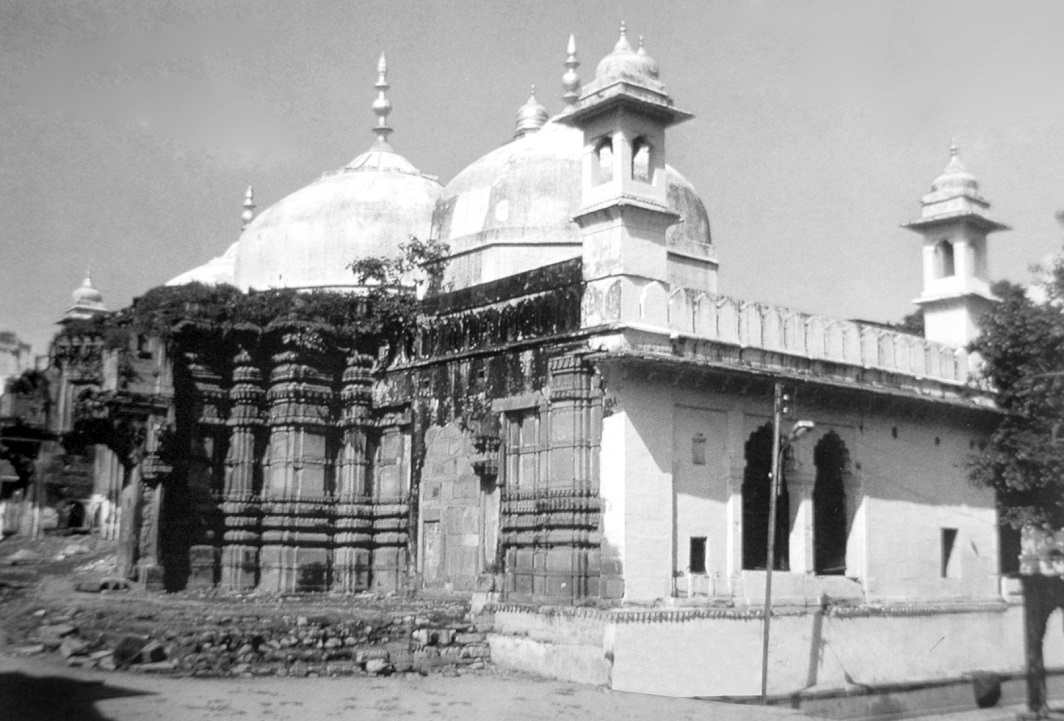

1984: Politicisation of Temples Grows
In 1984, there was a noticeable increase in the politicization of temples and religious sites in India. Specifically, Ayodhya, Mathura, and Varanasi became central to political discussions during this period. In Varanasi, the Gyanvapi mosque became embroiled in political maneuvering and debates that went beyond its religious significance. This trend of politicizing religious sites turned them into symbolic battlegrounds for various political ideologies and agendas. In Ayodhya, the coexistence of the Babri Masjid and the Ram Janmabhoomi played a decisive role in shaping the narrative around religious sites. The demand to build a Ram temple at the disputed site and subsequent events, including the demolition of the Babri Masjid in 1992, profoundly impacted religious sentiments across the country. At the same time, Mathura and Varanasi, renowned for their historical and religious heritage, became essential in discussions about preserving and asserting religious identities. The growing politicization of these temples reflected a broader trend of identity politics that influenced public opinion and the socio-political landscape.
In 1984, attention began to increase on religious sites, specifically the Gyanvapi mosque, which became an important part of a broader story. Subsequent events further contributed to the complex dynamics surrounding the mosque and its historical origins.
Meanwhile, in the same year, the ‘first religious parliament’ for Hindus was held in New Delhi. During this gathering, 558 Hindu seers issued a resolution claiming ownership of three important Hindu shrines—Ayodhya, Mathura, and Varanasi—where mosques were said to be constructed. This initiative led to the politicization of religious sites, with the Babri Masjid-Ayodhya dispute emerging as the central focus during the 1980s and early 1990s.
The Places of Worship (Special Provisions) Act is Passed
In 1991, the Union Government, led by Prime Minister P.V. Narasimha Rao, passed the Places of Worship (Special Provisions) Act in response to the escalating Babri Masjid-Ayodhya dispute. The Act aimed to prevent any changes to religious sites from their original state in 1947. However, it is important to note that the Act did not apply to the Babri Masjid-Ayodhya dispute specifically. The Bharatiya Janata Party (BJP) opposed the Act but supported the Ayodhya exception, and called for the extension of the same exception to the Krishna Janmabhoomi dispute in Mathura and the Kashi Vishwanath dispute in Varanasi. Unfortunately, this extension was never granted.
After the Babri Masjid was demolished on December 6th, 1992 by hindu groups, a slogan emerged among Hindu groups : Ayodhya toh bas jhaanki hai, Kashi, Mathura baaki hai – indicating that Ayodhya was just the beginning, with Kashi and Mathura remaining as focal points in the larger discourse on religious identity and sites

1991: Gyanvapi Dispute Reaches the Courts
The controversy over the Gyanvapi mosque’s history started in 1991 when priests in Varanasi filed a petition in a local Civil Court. They asked for permission to worship in the mosque, claiming that it was built on top of the original Kashi Vishwanath temple. They also requested that the mosque’s land be given to Hindus. The mosque Management Committee opposed the petition, arguing that it violated the 1991 Act. However, in 1998, the lower court rejected their objection. The committee then appealed to the Allahabad High Court, which suspended the proceedings in 1998. The dispute remained inactive until the resolution of the Ayodhya Title Dispute in 2019.
2019: Petition Filed for Archaeological Assessment
In December 2019, just a month after the Ayodhya verdict, a new petition was filed at a Varanasi Civil Court. The petitioner, acting as a representative for Swayambhu Jyotirling Bhagwan Vishweshwar (the deity at Kashi Vishwanath), requested an archaeological assessment of the Gyanvapi mosque’s origins. A “next friend” is someone who represents a party that is unable to pursue a lawsuit themselves. In 2020, the original petition from 1991 was brought back to the Civil Court in Varanasi by the plaintiffs. However, the proceedings were halted by the Allahabad High Court in February 2020, and a judgment on the matter was reserved in March 2020. Despite the stay, the Varanasi Civil Court reopened the case in April 2021. The Civil Judge (Senior Division), Ashutosh Tiwari, ordered an investigation into the mosque’s origins by the Archaeological Survey of India. The mosque’s Management Committee then approached the Allahabad High Court, which once again put a halt to the proceedings on September 9th, 2021. The High Court criticized the Civil Court for continuing with the case even though a judgment had been reserved.
2020: Writ Petition Challenges Constitutionality
In 2020, there was an important development in the Gyanvapi mosque dispute. A writ petition was filed challenging the constitutionality of the Places of Worship Act, 1991. This legal action aimed to examine the Act and understand its impact on the Gyanvapi mosque’s history. The petition questioned the validity of the Act, which was enacted to prevent the conversion of religious places as they were on August 15th, 1947. In October 2020, Advocate Ashwini Kumar Upadhyay filed a Writ Petition at the Supreme Court challenging Sections 2, 3, and 4 of the Places of Worship (Special Provisions) Act, 1991. Section 2 provides definitions of the Act, while Section 3 makes it a criminal offense to change the religious character of a place of worship from one sect to another. Section 4 states that a place of worship’s religious character should be determined based on its form on August 15th, 1947.
Additionally, it prohibits Courts from investigating changes made to the religious character of places of worship after this date.The petition claims that the Act prohibits judicial review, which is an essential part of the Constitution, and also goes against the principles of secularism. It argues that the cut-off date has a particularly negative impact on Hindus, Sikhs, Buddhists, and Jains, as it prevents them from rebuilding places of worship that were destroyed during the British and Islamic regimes before independence. The petition also states that mosques that were constructed on demolished temples are not considered valid under Muslim personal law, meaning that the destroyed temples still retain their legal status. The case is currently awaiting a decision from the Court after notice was issued by former Chief Justice of India, Sharad Bobde.
This move made the ongoing legal discussion about religious sites more complicated. It brought up questions about the laws that govern these sites and whether they are fair. The writ petition challenged the Places of Worship Act, questioning if it is constitutional and if it adequately protects religious structures with disputed histories. In 2020, this legal challenge in the Gyanvapi mosque dispute was significant because it explored the constitutional aspects that affect places of worship and their historical stories. The results of this writ petition could have an impact on the legal system regarding religious sites in India.
August 2021, April-May 2022: Proceedings of Fresh Petition by Hindu Women
In August 2021, five Hindu women went to court in Varanasi to ask for permission to worship Hindu idols located in the Gyanvapi mosque. They wanted to assert their religious rights in the mosque. On April 8th, 2022, the court appointed Ajay Kumar Mishra to conduct a survey of the mosque and verify the existence of the idols. The mosque’s Management Committee objected to Mishra’s appointment because he was proposed by the Hindu petitioners. They asked the Allahabad High Court to stop the survey, but their request was denied on April 21st. The survey started on May 6th amidst increased tensions between religious groups. On May 7th, the Management Committee asked the court to remove Mishra because they claimed he was biased in his approach. However, the court rejected their application on May 12th and allowed officials to file complaints against anyone who obstructed the survey.
May 13th,2022: Challenges to Gyanvapi Mosque Survey Reach Supreme Court
After beginning the videographic survey on May 6th, 2022, several legal challenges arose in the Gyanvapi mosque dispute. The mosque’s Management Committee strongly opposed the survey, claiming bias and impropriety. On May 13th, 2022, these legal challenges were taken to the Supreme Court, as the Management Committee requested a pause in the proceedings at the Varanasi Civil Court. Senior Advocate Huzefa Ahmadi, representing the mosque’s Management Committee, presented a compelling argument to the Supreme Court. He argued that the survey violated Section 4 of the Places of Worship Act, which prohibits changing the religious character of a place of worship after August 15th, 1947. Despite the Committee’s request for a pause, the Supreme Court denied it and instead decided to schedule the matter for a later date before a Bench led by Justice D.Y. Chandrachud. Justice Chandrachud, a respected member of the 5-Judge Constitution Bench in the Ayodhya Title Dispute, presided over the proceedings on May 16th.
Before the Supreme Court hearings began or the survey’s report was filed, an unexpected event unfolded at the Varanasi Civil Court. On that day, the court ordered the Varanasi District Magistrate to seal off a specific area within the mosque premises. It was alleged that a shiv lingam had been discovered in this area. This revelation caused a lot of controversy because it was made without the knowledge of the mosque’s Management Committee. The committee later disputed the claim, stating that the structure in question was actually a fountain, not a shiv lingam. These events added complexity to the ongoing dispute and brought attention to the legitimacy of the survey and its potential impact on the broader issues surrounding the Gyanvapi mosque. The legal challenges and subsequent hearings highlighted the intricate relationship between history, law, and faith, shaping the narrative of one of India’s long-standing and contentious religious conflicts.
May 17th, 2022: Supreme Court Begins Hearing Mosque Dispute
The Gyanvapi mosque dispute is currently being heard by the Supreme Court. The court began hearings on May 17th, 2022, with Justices Chandrachud and Narasimha leading the proceedings. They are examining the legal challenges raised by the mosque’s Management Committee. Specifically, they are looking into concerns about the methodology and fairness of the videographic survey conducted, and whether it aligns with the Places of Worship Act, 1991.
The Supreme Court’s involvement is crucial in shaping the outcome of this complicated dispute. Senior Advocate Huzefa Ahmadi, representing the Management Committee, argued that the survey violated Section 4 of the Places of Worship Act, which prevents altering the religious character of a place of worship after August 15th, 1947. Despite the Committee’s request to halt the proceedings, the Supreme Court, led by Justice Chandrachud, continued with further discussions. Throughout the hearings, the court carefully considered the historical context and legislative framework governing places of worship in order to navigate the complexities of the Gyanvapi mosque dispute. The court’s decision had a significant impact, not only on the immediate dispute but also on the overall legal narrative concerning religious sites in India. On the same day, the Varanasi Civil Court removed Advocate Commissioner Ajay Kumar Mishra due to allegations of leaked footage from the video survey. Special Advocate Commissioner Vishal Singh and an Assistant Advocate Commissioner were appointed to complete the remaining survey tasks. This added more complexity to the ongoing legal proceedings.
In another development on May 17th, the Narendra Modi Vichar Manch, a Hindu group from Karnataka, accused Masjid-e-Ala in Srirangapatna of being built over a demolished Hanuman temple. They sought a survey and permission for Hindu worship in the mosque premises, and approached local authorities. Subsequently, on May 18th, the Akhil Bharat Hindu Mahasabha wrote to Prime Minister Narendra Modi, requesting the excavation of Hindu idols supposedly buried under the steps of Jama Masjid in New Delhi.
May 19th, 2022: Survey Committee’s Report Submitted
On May 19th, 2022, significant developments occurred in the Gyanvapi mosque dispute. The Supreme Court Bench postponed hearings for a day and suspended all proceedings at the Varanasi Civil Court until May 20th. However, the Civil Court ignored the order and scheduled a hearing for May 23rd, further complicating the legal proceedings. At the same time, the Survey Committee presented two reports to the Varanasi Civil Court regarding their findings from the videographic survey. The reports revealed the discovery of debris from Hindu temples on the northern and western sides of the mosque.
Additionally, Hindu symbols and iconography were found on pillars in the mosque’s basement. The Committee also noted large panels colored with sindoor, believed by the petitioners to be remains of the Maa Shringar Gauri idols. Moreover, Danish Quereshi, the Gujarat spokesperson for the All India Majlis-e-Ittehadul Muslimeen, was arrested on that day for a controversial social media post related to the Gyanvapi mosque.
May 20th, 2022: Supreme Court Transfers Case to District Judge
On May 20th, 2022, the Supreme Court transferred the Gyanvapi mosque dispute case to a Varanasi District Judge, recognizing the need for a more experienced judicial approach. Justice Surya Kant joined the Bench for the day’s proceedings, emphasizing the importance of balance and unity in resolving the issue. The mosque claimed that the survey conducted violated the Places of Worship Act, 1991 but the Bench clarified that investigating the nature of a place of worship is different from altering it. During the proceedings, the Bench instructed the District Judge to give priority to the mosque Management Committee’s challenge to the Hindu petition’s validity. However, it did not explicitly state whether the Judge could consider the Survey Committee’s report in reaching a decision. The Court’s May 17th Order, which protected both the shiv lingam and regular namaz at the mosque, will remain in effect until the District Court delivers its verdict. As the Bench concluded the hearings for the day, a large number of devotees gathered at the Gyanvapi mosque to offer namaz, despite the mosque’s appeal to avoid overcrowding the premises.In 1992, there were similar incidents of large crowds gathering at a disputed site, which eventually led to the demolition of the Babri Masjid.
On the same day, a plea was filed in the Mathura District Court asking for the land where the Shahi Idgah mosque is located to be transferred to the Krishna Janmabhoomi Sthal. It is believed that the mosque was built on the site where the Hindu deity Krishna was born. In Bhopal, the Sanskriti Bachao Manch approached the state government to conduct an archaeological survey at the city’s Jama Masjid, which is said to have been built on a Shiva temple. The Manch is preparing to file a civil petition in a Court in Bhopal. Furthermore, New Horizon Public School in Bengaluru sent an email to its alumni, urging them to change the name of ‘Gyanvapi mosque’ to Gyanvapi temple on Google Maps. These events highlight how the Gyanvapi mosque dispute is not limited to the courtroom and is influencing public sentiments and actions
May 23rd, 2022: Varanasi District Court Begins Hearings
On May 23rd, 2022, District Judge Ajaya Krishna Vishvesha began the hearings for the Gyanvapi dispute. On that day, the Maharashtra Navanirman Sena claimed that Pune’s Punyeshwar and Narayaneshwar were destroyed by Alauddin Khilji from the Delhi Sultanate. They urged the public to support their campaign to ‘free temple land’. Additionally, a Delhi University professor, who had been arrested the previous week for a ‘malicious’ social media post regarding the Gyanvapi mosque dispute, was granted bail by the Delhi High Court.
July 2022: Supreme Court Defers to District Court But Leaves Case Pending
On July 18th, the Supreme Court received a request to allow ‘puja’ and ‘darshan’ at the Gyanvapi mosque. The focus was primarily on a Shivling that is said to be located within the mosque. The petition also asked for a ground-penetrating radar survey and carbon dating of the Shivling to be conducted by the Archaeological Survey of India. Additionally, the petition sought possession of the Shivling, despite the Mosque Committee arguing that it is actually a fountain.
On July 21st, Senior Advocate Huzefa Ahmadi, representing the Gyanvapi Mosque Management Committee, challenged the decision of the Allahabad High Court. The High Court had supported the formation of an Enquiry Commission by the Varanasi Civil Court. Ahmadi disagreed with the High Court’s view that the Commission’s findings were insignificant and pointed out that the mosque premises had been sealed as a result of those findings. Initially hesitant to get involved, the Supreme Court ultimately decided to keep the petition pending until the District Judge determined whether the Commission’s formation was legal.
August, September 2022: Varanasi District Court Delivers Judgment on Gyanvapi Plea
On August 24th, 2022, Advocate Shamin Ahmad, representing the Masjid Committee, argued that the Gyanvapi mosque belongs to the Waqf Board. They stated that the board has exclusive authority over matters concerning the mosque. However, District Judge A.K. Vishvesha decided to postpone the order until September 12th, allowing both parties to complete their arguments.
On September 12th, 2022, District Judge A.K. Vishvesha issued the order rejecting the Waqf Board’s claim that the plea filed by Hindu women, seeking permission to worship at the disputed site, should be dismissed. Instead, the District Judge scheduled the next hearing for September 22nd, 2022, to establish the issues that will be considered by the court.
July 21, 2023: Scientific Survey Ordered by Varanasi District Court
On July 21, 2023, District Judge A.K. Vishvesha of Varanasi ordered a scientific survey of the Gyanvapi mosque complex. The purpose of the survey was to determine whether the mosque was built on top of a pre-existing Hindu temple. The responsibility for this investigation was given to the Archaeological Survey of India (ASI). Specifically, they were tasked with conducting a scientific investigation, survey, and excavation of settlement plot number 9130, where the Gyanvapi mosque is located.
August 4, 2023: ASI Survey Resumes After Court Approval
On August 4, 2023, the ASI resumed its survey activities after receiving approvals from both the Allahabad High Court and the Supreme Court. Strict security measures were put in place for this survey. The courts dismissed joint pleas made by the Anjuman Intezamia Masajid Committee for Gyanvapi mosque and the UP Sunni Central Waqf Board. This decision allowed the ASI to continue its survey, which was a significant development in the ongoing examination of the mosque complex
December 11, 2023: Varanasi District Court Grants Extension
The Varanasi District Court has granted an extension to the ASI (Archaeological Survey of India), giving them an extra week to submit the results of the scientific survey they were ordered to carry out on the Gyanvapi mosque premises. The ASI had initially presented their report in a sealed cover on December 18, 2023, emphasizing the complexity of the investigation and the importance of a thorough examination.
January 25, 2024: ASI Report Confirms Hindu Temple Existence
On January 25, 2024, the Archaeological Survey of India (ASI) released its survey report on the Gyanvapi Mosque in Varanasi, uncovering a contentious historical narrative. Advocate Vishnu Shankar Jain, representing the Hindu side, disclosed pivotal findings during a press conference, unraveling a rich historical tapestry.
The ASI report confirmed the existence of a large Hindu temple structure at the Gyanvapi Mosque. The excavation uncovered fragments of statues, iconography, and structural evidence supporting this claim. According to Ground Penetrating Radar (GPR)survey , the current mosque structure was built on top of the pre-existing Hindu temple, with a distinctive central chamber and additional chambers aligned with the cardinal directions. Analysis of the Gyanvapi mosque's western wall revealed it to be an original part of the former Hindu temple. Additionally, the researchers found evidence of modifications made to the mosque, repurposing pillars from the ancient temple with minor modifications. Notably, attempts were made to erase the carvings on these pillars. The team also discovered inscriptions in various scripts, including Devanagari, Telugu, and Kannada, confirming ancient Hindu connections. These inscriptions contained the names of deities such as Janardana, Rudra, and Umeshwara.
During the survey, ASI recorded a total of 34 inscriptions on the stone, which were originally part of an earlier Hindu temple and later reused in the construction of the existing mosque. ASI's findings indicate that previous structures were demolished, and the remaining elements were incorporated into the mosque's construction and repairs.
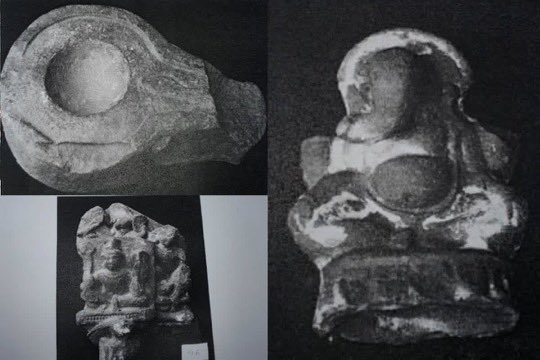
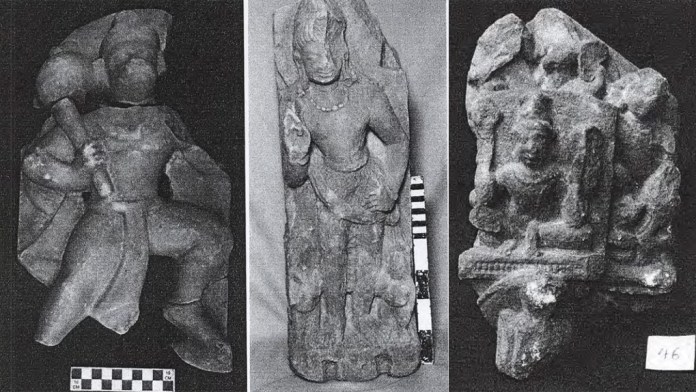
31st Jan,2024: Varanasi Court Permits Hindu Side to offer Prayers
Big win for for the Hindu side, a Varanasi district court on January 31 granted rights to the Hindus to offer prayers inside the ‘Vyas Ka Tekhana’ area inside the Gyanvapi mosque complex.
District Judge Ajay Krishna Vishwesha also asked the District Magistrate to takeover the basement and ensure that the puja starts in next 7 days.
The court allowed a priest’s kin the right to worship deities in Gyanvapi mosque cellar, Advocate Vishnu Shankar Jain, representing the Hindu side, said.
“...puja will start within seven days. Everyone will have the right to perform puja... Hindu side allowed to offer prayers at ‘Vyas Ka Tekhana’. The District Administration will have to make arrangements within 7 days,” Mr. Jain said.
Meanwhile, a mosque committee has said that it will approach the Allahabad High Court to challenge the judgment.
The mosque has four ‘tahkhanas’ (cellars) in the basement out of which one is still in possession of the Vyas family who used to live here. Vyas had petitioned that as hereditary pujari he be allowed to enter the tahkhana and resume puja.
Conclusion
The Gyanvapi mosque dispute is a complex issue involving legal, historical, and religious aspects. Recently, the Archaeological Survey of India discovered evidence of a Hindu temple beneath the mosque, further complicating the matter.
Amidst these legal and historical revelations, there is a powerful image that emerges. The Nandi of Kashi Vishwanath, traditionally facing the divine abode of Lord Shiva, now stands facing the disputed structure. This image represents the ongoing spiritual and legal quest for resolution.
The unresolved nature of the Gyanvapi mosque dispute reflects the enduring wait symbolized by Nandi. We hope that through empathy, dialogue, and a commitment to justice, this long wait will come to an end, and the Nandi of Kashi Vishwanath will once again look towards a harmonious future.
